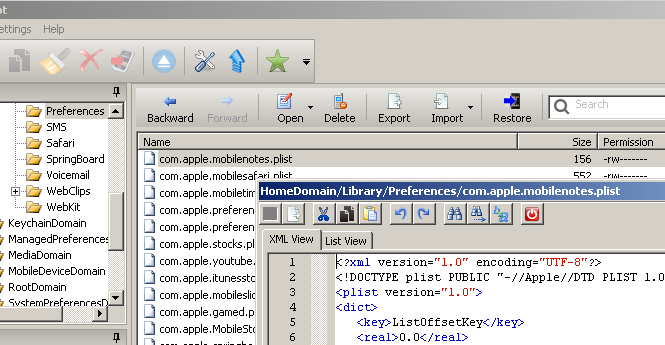

The 8-bit problem is implicitly solved as well, as most deployments use UTF-8. Binary data can also use the more efficient base64 format as. For example, an NSValue of boolean YES is represented as and NSDate objects are represented as.

The new typed entries have the form, where T is a one-letter type code. GNUstep adopts the NeXTSTEP format, with additions for representing NSValue and NSDate data types. This utility superseded three older commands. The defaults utility, introduced in OPENSTEP (1996), can be used to manipulate plist files used for storage of preferences (known as defaults in NeXTSTEP, hence the name) on the command line via their preferences domain, and this utility can be used to edit arbitrary plist files. Another limitation is that there is no official 8-bit encoding defined. As a result, these values would have to be converted to string, and "fuzzily" recovered by the application. One limitation of the original NeXT property list format is that it could not represent an NSValue (number, boolean, etc.) object. Value statements terminate by a semicolon. As in C, whitespace are generally insignificant to syntax.Comments are allowed as: /* This is a comment */ and // This is a line comment.The left-hand side must be a string, but it can be unquoted. Spaces and comments between paired hex-codes are ignored. Strings are represented in C literal style: "This is a plist string\n" simpler, unquoted strings are allowed as long as they consist of alphanumericals and one of _$+/.Under NeXTSTEP, property lists were designed to be human-readable and edited by hand, serialized to ASCII in a syntax somewhat like a programming language. Namely, NeXTSTEP used one format to represent a property list, and the subsequent GNUstep and macOS frameworks introduced differing formats. Since the data represented by property lists is somewhat abstract, the underlying file format can be implemented many ways. pbxproj extension for old-style plists used as project files. The former is a "reduced" old-style plist containing only one dictionary without the braces (see propertyListFromStringsFileFormat), while the latter is a fully-fledged plist. Property lists are also used for localization strings for development. They are also used to store information about bundles and applications, a task served by the resource fork in the old Mac OS. Property list files are often used to store a user's settings. plist, and thus are often referred to as p-list files. Property list files use the filename extension. In the macOS, iOS, NeXTSTEP, and GNUstep programming frameworks, property list files are files that store serialized objects.


 0 kommentar(er)
0 kommentar(er)
